The 14 Most Iconic Trees Native to Vermont
Vermont has a climate that is just right for many species of trees, both deciduous and evergreen. However, biologists only consider trees that were in the state before European settlers to be native trees. Here are 14 of the most iconic trees native to Vermont.
1. American Beech
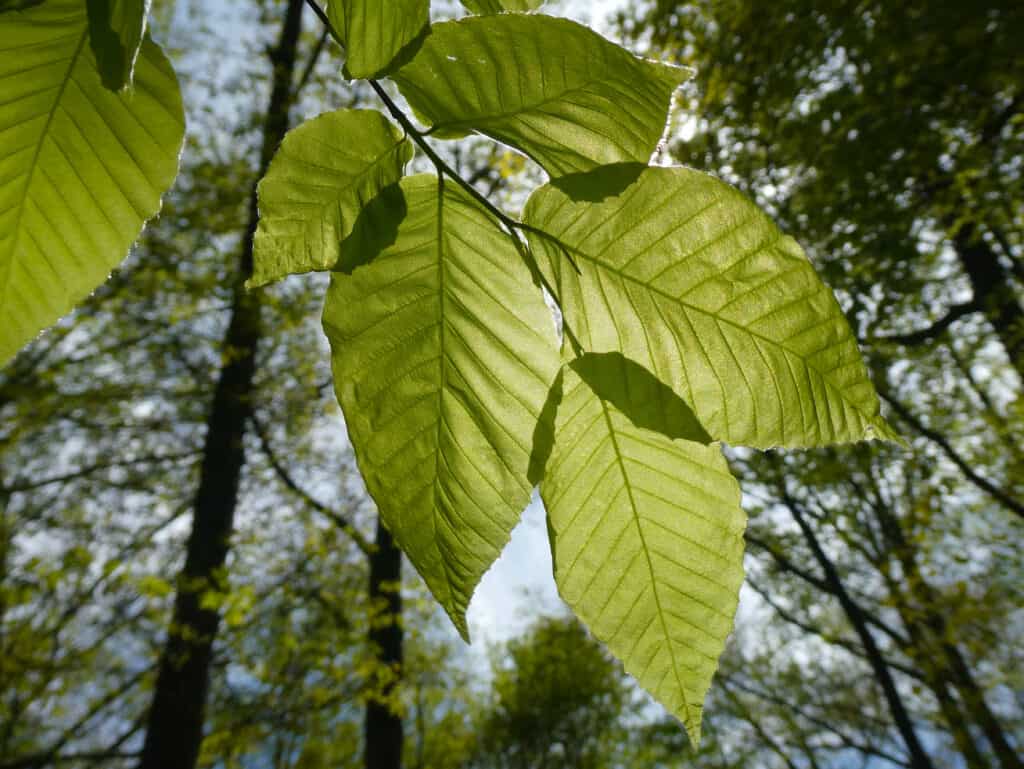
©ForestSeasons/Shutterstock.com
Prized for the beauty of its bark and leaves, the American beech grows to between 80 and 115 feet tall, though some have been taller. Its leaves are oval, pointed and toothed. They’re blue green on top and pale green beneath and seem to glow when the sunlight shines through them. The tree’s thin, bluish gray bark keeps the tree looking beautiful even after all the leaves have fallen. Its fruits are triangular and enclosed in a husk that splits into woody, spiny lobes. The tree thrives in Vermont’s cool climate and its chalky, alkaline soils.
2. Balsam Fir
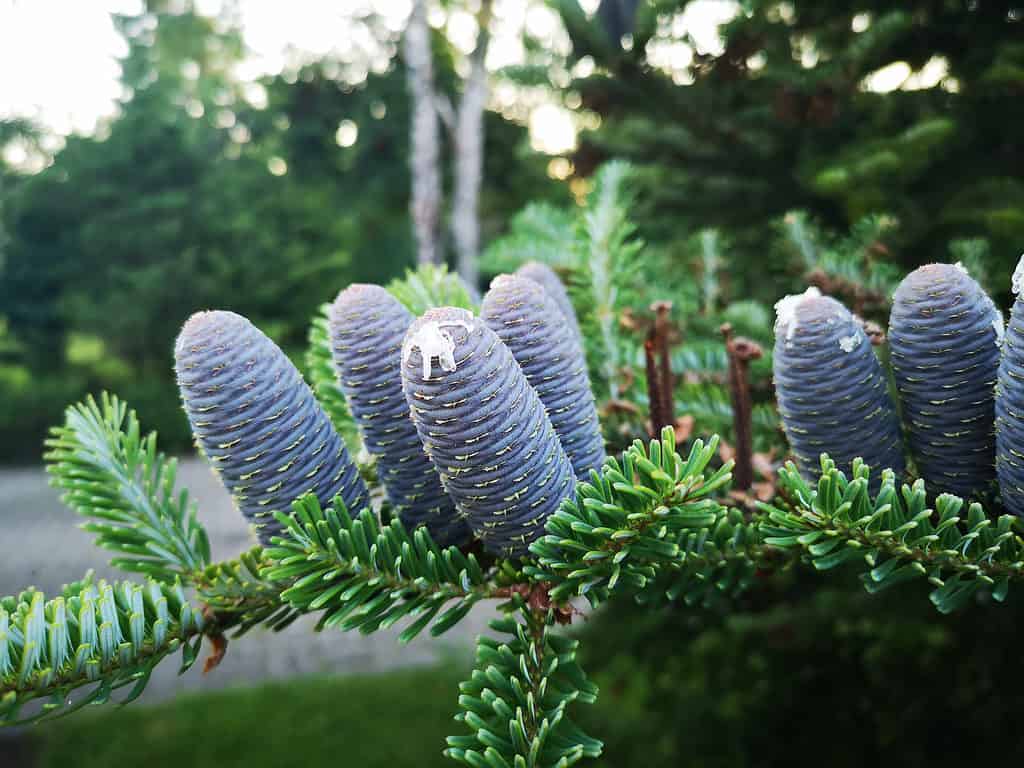
©Kolde IT/Shutterstock.com
This fascinating coniferous tree produces an oleoresin called Canada balsam that’s used as a glass cement for microscopes and other optical instruments. The tree itself grows to around 80 feet high and has a brownish gray bark, and younger trees produce the valuable resin. The needle-like leaves are about an inch long, grayish on top and sometimes grooved or glossy. When they fall, they leave a scar on the tree branch. The tree is also known for having upright cones with scales that overlap. At first, they’re greenish gray or dark blue then eventually turn a mauve-brown color. The tree produces male and female flowers, and the male flowers are greenish yellow with a pink tinge. Female flowers are lemon yellow.
3. Black Cherry
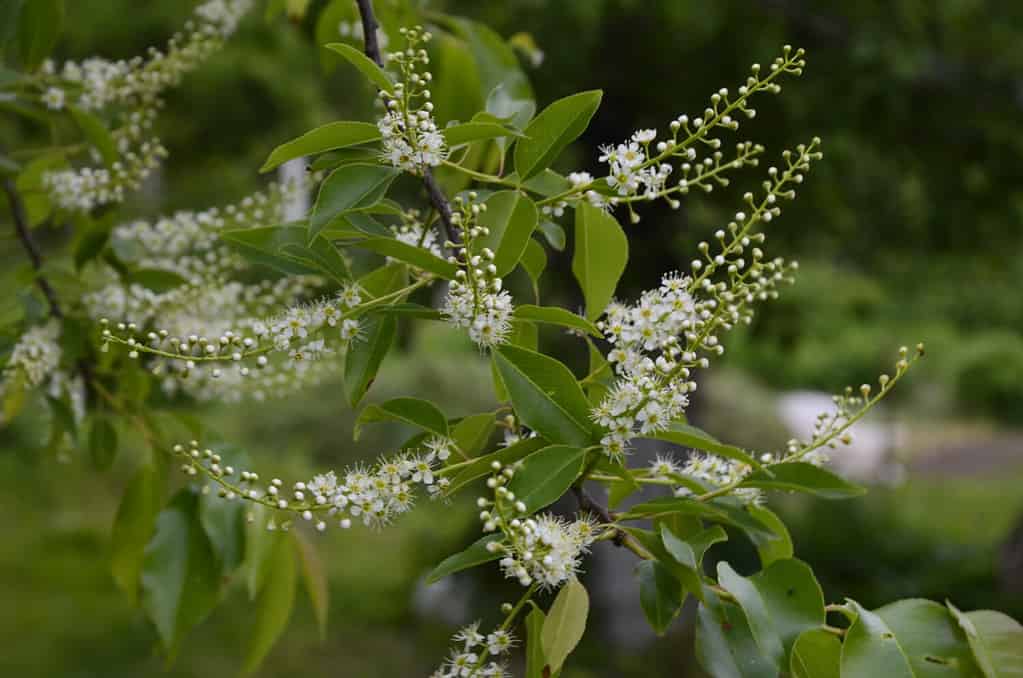
©weha/Shutterstock.com
This cherry tree isn’t closely related to the domesticated cherry trees that produce the cherries you’d buy in the supermarket, even though all of them are part of the Prunus genus. This medium sized tree grows to between 49 and 79 feet high and has shiny, dark green, oval leaves with fine teeth. For the first 10 years or so of its life it has attractive, smooth, banded trunk. Over the years the bark becomes furrowed and turns charcoal gray to black. When you break a branch, you’ll notice a lovely smell like almonds. However, this means that the tree contains cyanide, and this chemical accumulates in the seeds of the cherries and the leaves of the tree.
The black cherry produces racemes of tiny, white, five petaled flowers that eventually give way to bunches of red-black cherries that are sought after by birds instead of people. People do love the tree’s beautiful yellow or red fall foliage.
4. Black Willow
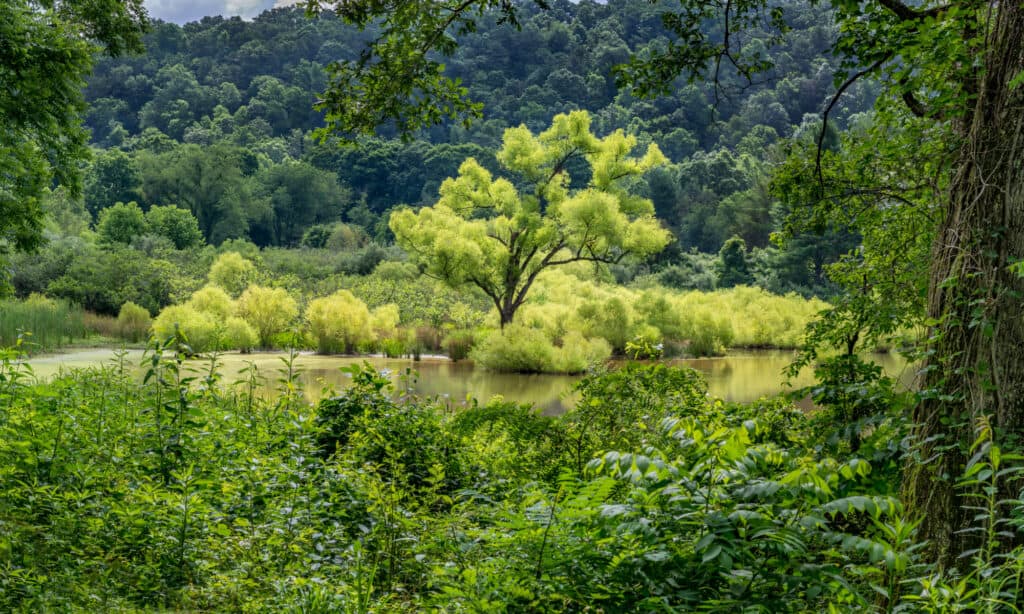
©Gerry Bishop/Shutterstock.com
Another medium sized tree, the black willow grows between 35 and 100 feet tall. It has long, lance-shaped leaves with the tiniest serrations at the edges. They’re dark green on top and light green on the underside. The dark brown or black bark is scaly and sometimes rough and fissured, and the trunks of black willow trees often fork near the bottom. The trees are either male or female. Male catkins are 1 to 2 inches long, and female flowers are even smaller. However, the wind doesn’t carry pollen to fertilize the female flowers. Fertilization relies on insect pollinators, since the flowers contain nectaries. The resulting seeds have silky down that allows the wind to carry them a distance from the tree. Another way the plant reproduces is through natural cuttings.
You’ll find black willows, like many willows, by a water course. Twigs break off from the tree and are swept downstream until they’re stranded on a muddy bank. Once there, they sprout roots, and another tree grows.
5. Eastern Red Cedar
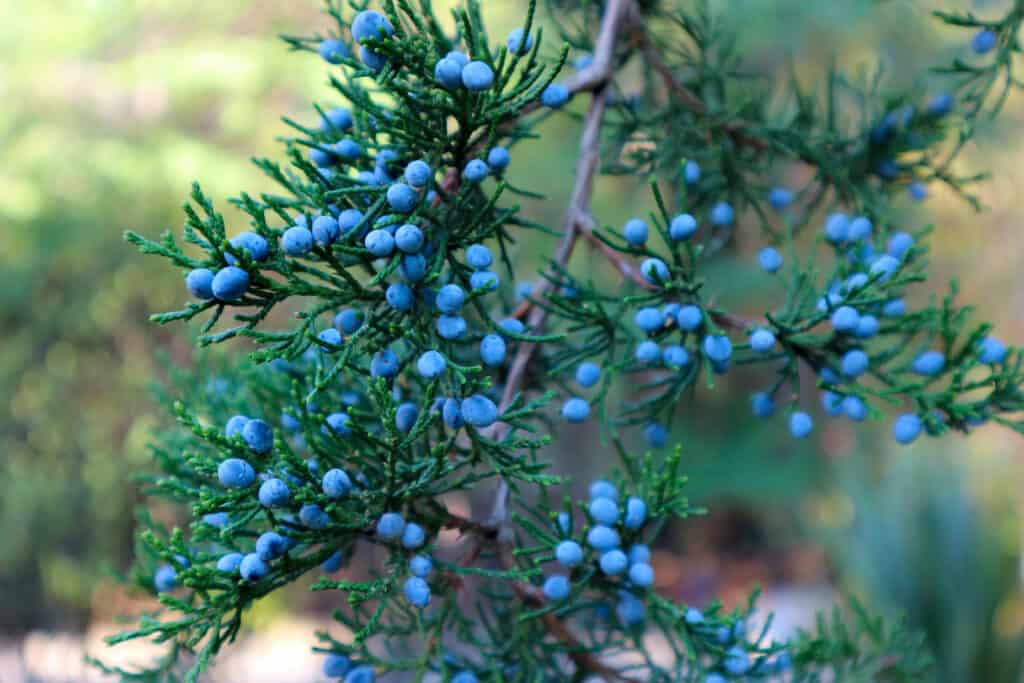
©iStock.com/Lyudmila Chetvertnykh
The eastern red cedar takes a while to reach its full height of between 16 and 66 feet tall, but individuals have been known to live for close to a millennium. It probably gets its name from its shedding, reddish brown bark. When it’s young, the leaves are needle-like, but when the tree matures, they become scaly and come in tight pairs or whorls. Easter red cedar trees are male or female. In male trees, the cones start producing pollen in earliest spring or even late winter. In female trees, seed cones are purplish blue, look like berries and have a waxy coating that makes them look blue. They hold one to three seeds and are favored by birds, who scatter the seeds in their droppings.
The tree is often one of the first to repopulate a disturbed area and is often found in old pastures or waste places. Its heartwood is prized because it resists rot, and people use it for fence posts. Since cedar wood also repels moths, clothes chests and closets are famously built out of it. Unfortunately, the eastern red cedar is a source of cedar-apple rust, so be careful not to plant apple trees near it.
6. Eastern Hemlock
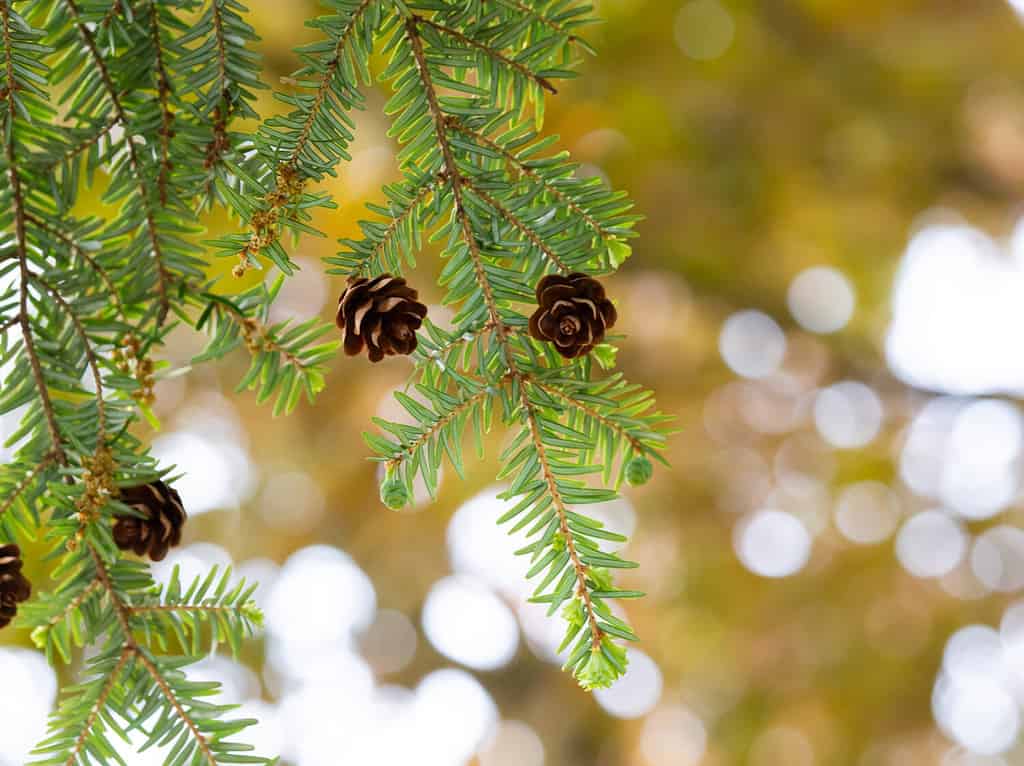
©Sleepyhobbit/Shutterstock.com
Though the eastern hemlock is the state tree of Pennsylvania, it is also native to Vermont. Unfortunately, these long-lived trees are declining due to an insect called the hemlock woolly adelgid, an invasive species that was accidentally brought over from Japan. Because of this infestation, its conservation status is near threatened.
Like the eastern red cedar, the eastern hemlock is a long-lived tree. The oldest tree known is over 500 years old. The tree can grow to around 100 feet tall and the trunk, which is usually straight and not forked, can be over 4 feet in diameter. The leaves are short in length, just barely toothed and flat. The underside is grayish while the top of the leaf is green or yellowish green. The leaf buds are oval and tiny, and the seed cones are oval, scaly and can be up to an inch long.
Like the red cedar, the wood of the eastern hemlock is useful but not as decay resistant. Still, eastern hemlock wood is good for railroad ties since it can hold on to spikes. Other uses are for general construction and pulp for paper.









